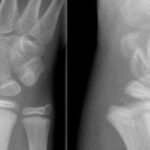1. There were no significant differences in total, non-vertebral, or hip fractures between the supplemental vitamin D and placebo groups of older adults.
2. Differences in fracture incidence remained insignificant after controlling for ethnicity, body mass index, age, and baseline vitamin D levels.
Evidence Rating Level: 1 (Excellent)
Study Rundown: Bone fractures are major public health issues in older adults. Vitamin D is implicated in bone formation pathways and vitamin D supplements are widely recommended to promote bone health and prevent fractures. However, there is conflicting evidence for the efficacy of supplemental vitamin D on bone fracture prevention. The present study used data from the randomized controlled Vitamin D and Omega-3 Trial (VITAL) to evaluate the safety and efficacy of supplemental vitamin D for lowering fracture risk as compared to a placebo. There were no significant differences between groups in the incidence of total, non-vertebral, or hip fractures at five-year follow-up. The incidences of major osteoporotic, pelvic, and wrist fractures were also not significantly different between groups. The differences remained nonsignificant after considering demographic characteristics, personal use of supplemental calcium or vitamin D, and baseline 25-hydroxyvitamin D levels. There were no significant differences in the incidence of adverse events between groups. As a limitation, this is an ancillary study of VITAL, which was not specifically designed to evaluate the effect of vitamin D supplementation on bone health. As part of VITAL, participants in both supplemental vitamin D and placebo groups were further randomized to receive omega-3 fatty acid, which may affect study findings.
Click to read the study in NEJM
In-Depth [randomized control trial]: In the present study, men over the age of 50 and women over the age of 55 in the United States were randomized into vitamin D supplementation (n=12,927) and placebo (n=12,944) groups. Participants in each group were then randomized 1:1 to receive omega-3 fatty acid supplementation and a placebo. This study presented the main effects of vitamin D compared to placebo, as analysis showed no interaction between vitamin D and omega-3 fatty acid in fracture outcomes. Participants received a placebo or 2000 international units (IU) of cholecalciferol per day and were followed for a median of 5.3 years. A total of 1,991 fractures were confirmed in 1,551 participants on medical record review. There were no significant differences between vitamin D and placebo groups for incidence of total (769 and 782 participants respectively), non-vertebral (721 and 744 participants respectively), and hip fractures (57 and 56 participants respectively). Controlling for baseline age, sex, ethnic group, body mass index, personal use of supplemental calcium or vitamin D, or 25-hydroxyvitamin D levels did not result in significant differences in fracture risk. Further, the groups had no significant differences in major osteoporotic, pelvic, or wrist fractures. Supplemental vitamin D did not result in more adverse events, such as hypercalcemia or kidney stones. Study findings suggest that vitamin D supplementation does not confer increased protection against bone fractures among older adults.
Image: PD
©2022 2 Minute Medicine, Inc. All rights reserved. No works may be reproduced without expressed written consent from 2 Minute Medicine, Inc. Inquire about licensing here. No article should be construed as medical advice and is not intended as such by the authors or by 2 Minute Medicine, Inc.


